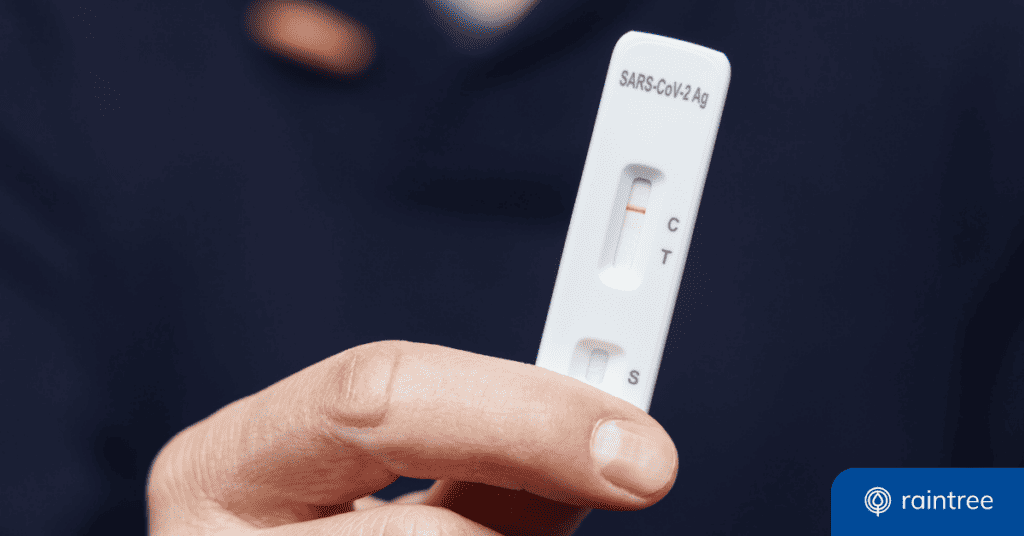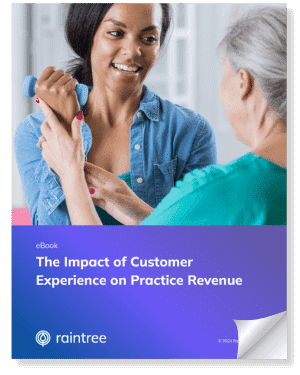
The year 2020 brought many unexpected challenges, but with unexpected challenges come unexpected solutions. That’s why we want to discuss the future of healthcare—from what has already changed, to new technological developments. Patient behavioral trends and expectations are predicted to continuously impact how medical providers facilitate care, long after Covid restrictions have lifted.
Patient Experience and Telehealth
When the pandemic struck, providers were predominantly faced with overcoming patient fears of exposure and adapting to alternative methods of care that appropriately accommodated necessary social distancing protocols.
Thankfully, numerous telehealth platforms were quickly made available to help improve clinic accessibility and increase patient engagement efforts. These digital healthcare solutions included omni-channel software that allowed for virtual visits, patient self check-ins and streamlined remote communications via voice, text and email. In fact, Raintree began offering a telehealth platform addition to our patient engagement platform at no cost during the period of quarantine.
Related Content:
- Patient Engagement Tools to Use for PT, OT, and SLP in 2024
- Telehealth Guide For Pediatric Providers
- How Telehealth Benefits Physical Therapy
With the introduction and rise of telehealth, the patient experience has evolved into a hybrid of in-person and electronic exchanges. Solutions that were once entirely purposed to counter the pandemic have now opened the eyes of patients and providers alike to the practicality and convenience of telemedicine, so much so that experts are now conceding that the benefits of telehealth are too much to ignore even after the pandemic subsides.
In an interview hosted by Business Insider, Doctor Anthony Rudine states:
“Not only do I think telemedicine is here to stay, but I think it’s going to be a great way to improve access to care for those that may not have had it before.”
Mental Health Apps
Another unfortunate result of COVID is the negative impact it has made on the public’s overall wellbeing. A recent national poll shows that 53% of adults in the U.S. have reported an influx of stress caused by the pandemic and are routinely struggling with their mental health. With this in mind, it comes to no surprise that similarly to telehealth, demand for mental health applications and teletherapy has become one of the more popularized methods to ending the negative mental health stigma we all face globally.
These technologies don’t just allow for virtual communication between patient and provider, but they also enable extensive monitoring of patients as well. Seeing as behavioral health is a fundamental aspect of improving mental health, developed solutions such as self-management apps, skill training games and smartphone sensors make it easy to detect movement patterns and predict behaviors, all of which aid in tracking patient outcomes as well as generating substantial data that helps advance mental health research.
Remote Patient Monitoring
As well as benefitting mental and behavioral health, remote patient monitoring (RPM) is also extremely useful amongst a variety of other medical specialties including pulmonology and chronic pain management.
Devices such as FitBits, smart watches and mobile fitness applications are excellent for promoting physical health, but they have additionally helped doctors maintain awareness of patient vitals at a safe distance or remotely during this transition into telemedicine. For example, Amazon’s new fitness tool, Halo, tracks body fat, measures temperature, recognizes sleep patterns and even analyzes tones of voice to help people better understand their body and stress intake at a much deeper level.
Business Intelligence
Due to the current climate, it is important now more than ever that providers are able to have access to information that allows them to stay on top of the stability and growth of their practices as well as to ensure that care can continue to be provided for those who desperately need it.
Thankfully, advancements in business intelligence and analytics software are improving how practitioners are making more informed decisions about their organizations. With interactive reports, customizable dashboards and comprehensive list views that host a plethora of drill down options, there is no longer a need to spend tedious hours searching, compiling and querying information.
Data mining is a thing of the past, and now providers not only have easy access to patient data but also to operational and financial insights that significantly influence the success of their business.
Revenue Cycle Management
Similar to business intelligence, revenue cycle management (RCM) tools give providers the ability to efficiently oversee staff productivity and stimulate practice profitability.
With the impacts of COVID, RCM has been pressured to match the demand for improved accessibility as well as increased financing flexibility and is anticipated to continue adapting to everchanging patient standards.
According to this recent study, the number one reason why patients report a negative billing experience is due to a need for more transparency with pricing. In fact, aside from issues with insurance coverage – all other reasons listed (including complex statements, lack of communication channels, confusing payment options, minimal support with financing, etc…) fall onto healthcare providers themselves.
Raintree holds matters of revenue cycle management in especially high regard amidst all the software and services we offer, as we understand exactly how important it is for the success of our clients and happiness of their patients. Learn more about how our RCM software and services go above and beyond to adapt to your business needs here.
The Future of Healthcare Post-Covid
Despite the initial chaos of COVID shining a light on many issues within the healthcare industry, it has also showcased how flexible and adaptable that same system can potentially be. As technology continues to push providers to utilize tools that emphasize both patient management and patient engagement, most trends from 2020 all point to the world needing more human connection, especially during a time when almost every “interaction” is virtual.
While it is clear that innovation is driving how providers facilitate care, beyond these advancements, it is the quality of care that truly fosters positive relationships. So, no matter the challenge, from billing, scheduling, reporting and more, we, as a software solutions provider, and the entire healthcare industry have gained a lot of valuable insight from this pandemic and are sure to come out stronger than before.
Update: For more information on how Raintree’s tools have evolved for providers and patients throughout the pandemic, check out our blog post on Telehealth Advancements!
